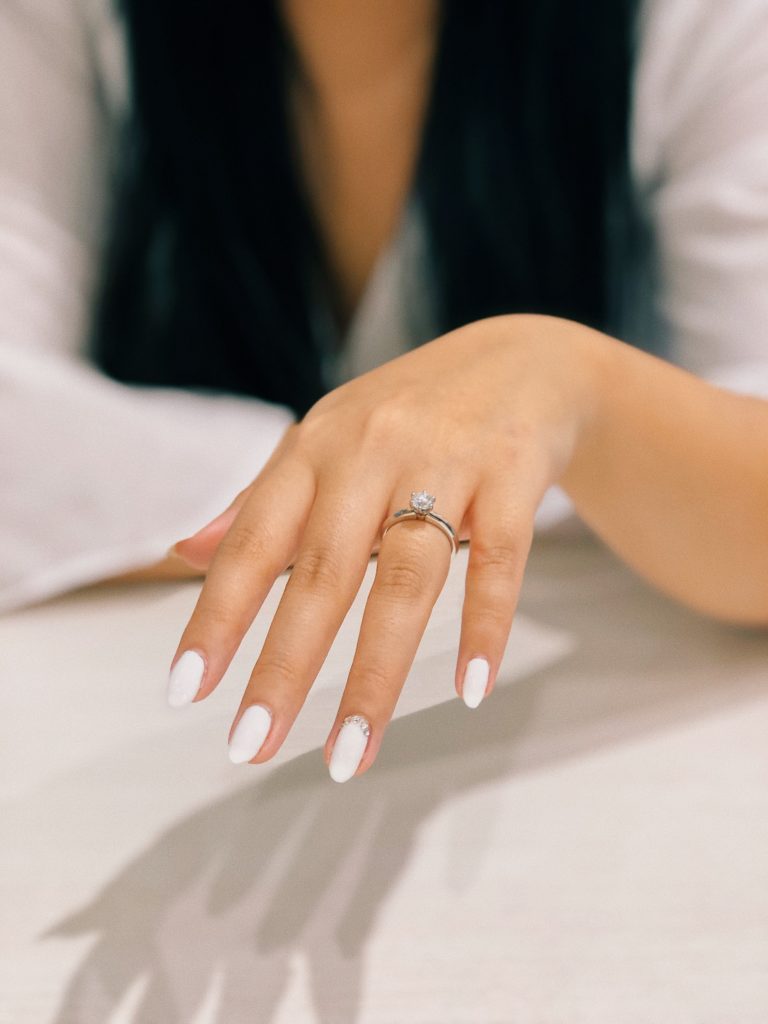Have you ever wondered why diamond engagement rings are the centrepiece for most western proposals? And have you ever questioned why wedding rings are expected to be worn on your left hand? And why is it we’re expected to spend a minimum of one month’s salary on an engagement ring?
These are just a few of the questions we answer below as we lift the lid on the history of diamond engagement rings. Pull up a seat and let’s dive in.
Where did it all begin?
As far as traditions go, gifting an engagement ring as an intent to marry is up there as one of the oldest. In fact, it can be reliably traced back as far as ancient Rome, where rings were generally made from iron, copper, ivory, flint and bone.
Although it has been questioned by contemporary scholars, a ring for a Roman bride wasn’t solely a symbol of love and commitment, but more a mark of purchase and ownership.
It’s also said that every bride was gifted with two rings. One made from gold which was to be worn in public and the other from iron, which was to be worn at home while completing domestic duties.

From as early as the 700s, it’s also believed engagement rings were traditionally worn on the same hand and finger as they are today. This is because the ring finger is said to contain a vein which leads directly to the heart.
As the tradition continued to build momentum across western cultures, diamonds would soon become standard practice for engagement rings, namely from the start of the Renaissance period right up to the modern day.
By 1872, the demand for more lustrous engagement rings saw an increase in mining in areas of the world such as South Africa with output exceeding more than one million carats per year.
An official symbol of marriage
It wasn’t until 850 that engagement rings were given official meaning, with Pope Nicholas l declaring it a symbol of a man’s intention to marry.
Because of its aesthetic appeal and long-lasting quality, gold was typically the material used for engagement rings. And according to Cape Town Diamond Museum, diamonds would not appear on engagement rings until much later in 1477.
Diamonds are forever
With World War I putting financial strain on countries like the United States, the demand for diamond engagement rings started to decline. By World War II, as little as 10% of engagement rings in the US contained a diamond.
But in 1939, cartel De Beers – an international organisation specializing in diamond mining – released a marketing campaign to educate the public about diamonds.
It would involve the 4Cs (cut, carats, colour and clarity), a universal language which helped buyers determine the true quality and value of diamonds around the world.
The campaign also introduced a new strapline ‘diamonds are forever’, which reinforced the message a diamond is permanent, eternal and indestructible – a notion which couples nicely with the idea of marriage. Because of the campaign’s success, diamond sales in the US went from $23 million to £2.1 billion between 1939 and 1979.

Popularity of diamond engagement rings in the 21st century
Western brides and grooms have endless options of where to buy a diamond engagement ring. Each will vary in price according to the quality of the diamond, gemstones and metals – as well as the value determined by the seller.
Though many believe an engagement ring should cost one month’s salary, this modern belief is the lingering effects of De Beer’s 1950s marketing campaign who pushed the idea of how much should be spent on a ring.
If you want our advice, spend what feels right to you. And if you want any advice on diamond engagement rings, either check out our post ‘how to find the perfect preowned engagement ring’ or give us a call on 01273 691939.
